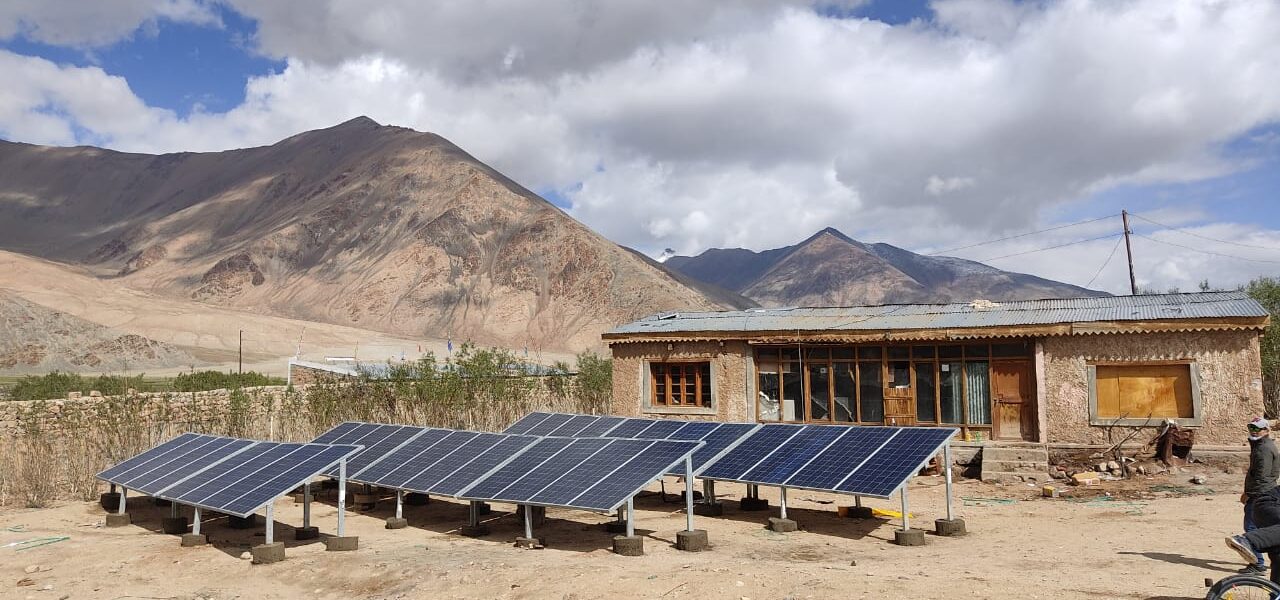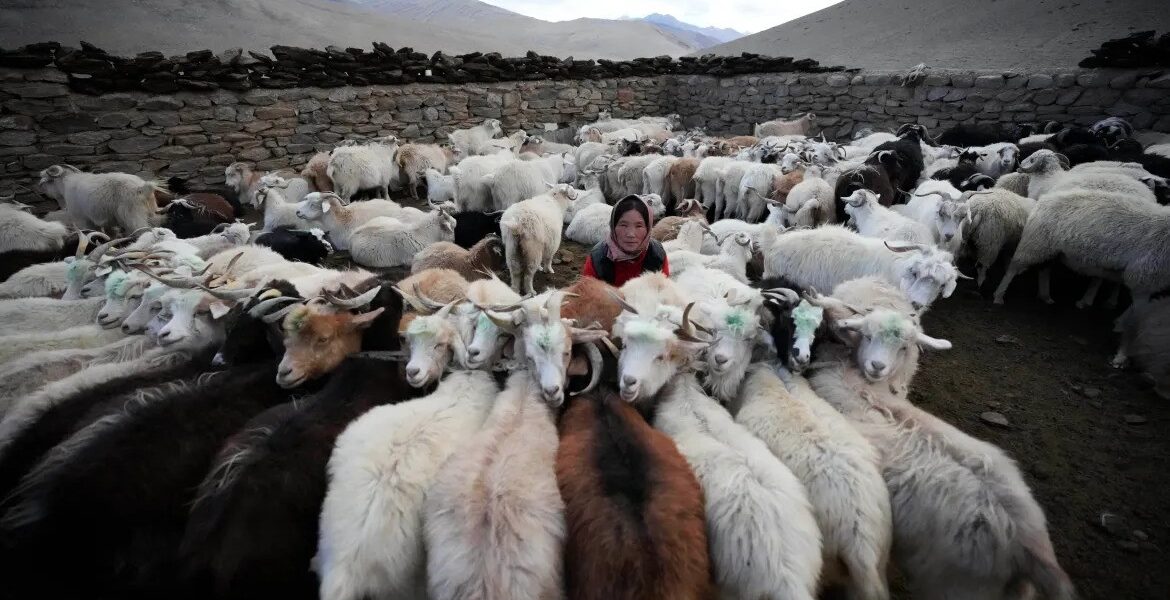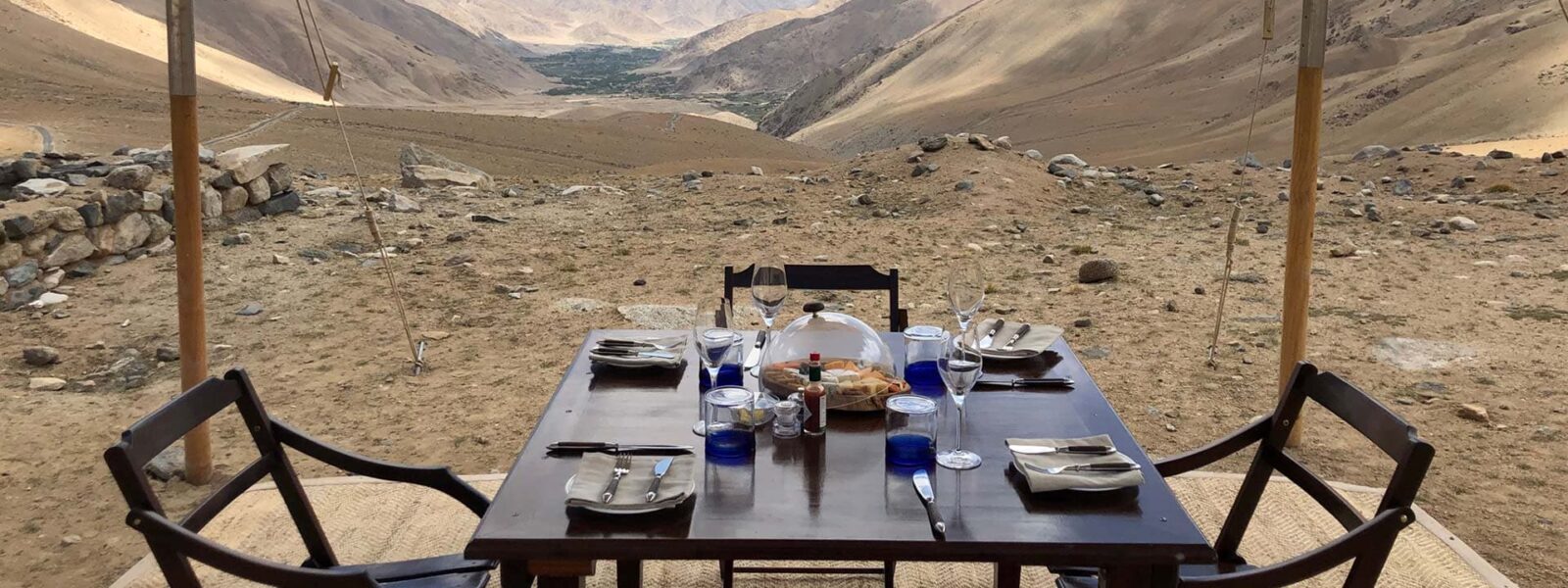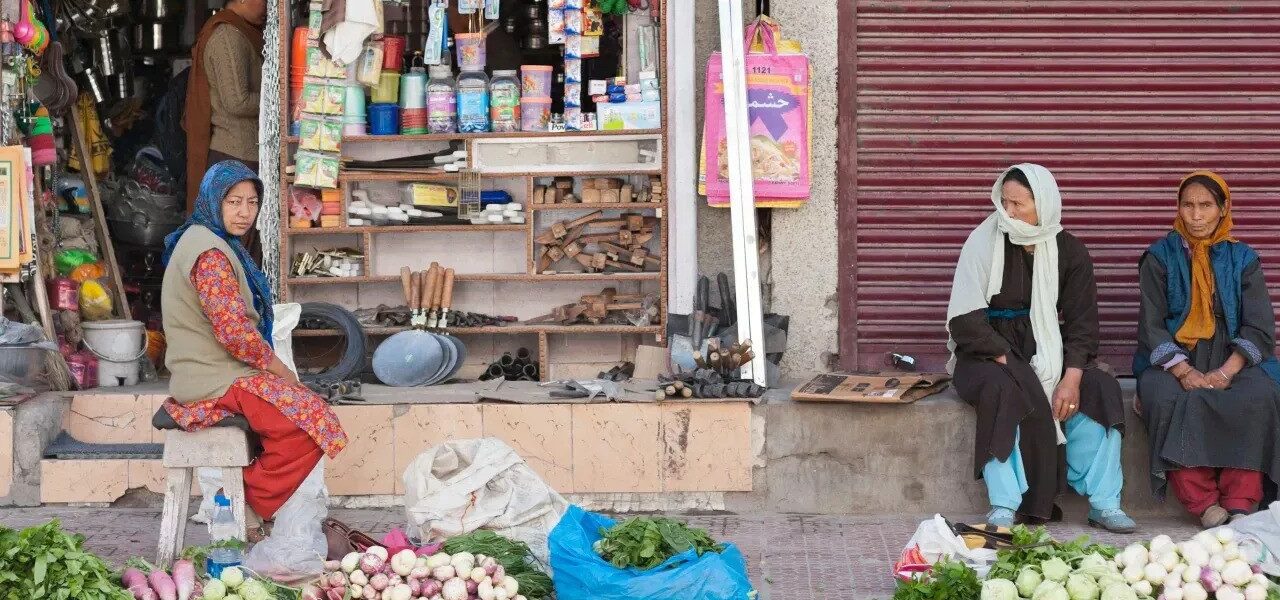Ladakh Solar Villages, nestled in the majestic Himalayas, are part of Ladakh—India’s high-altitude desert—known for its breathtaking landscapes and vibrant culture. However, life in Ladakh’s remote villages has long been challenging due to isolation and limited access to essential resources like electricity. But a quiet revolution is underway in this rugged region—one powered not by fossil fuels, but by the sun. Ladakh’s solar villages are setting a powerful example of how renewable energy can transform the lives of rural communities, bringing energy independence and sustainable development to even the most remote corners of the world.
In this blog post, we explore how Ladakh’s solar energy initiatives are leading the charge in the renewable energy revolution, overcoming obstacles, and providing a blueprint for global sustainability.
The Importance of Solar Power in Remote Regions Like Ladakh
Why Renewable Energy Is Critical for Ladakh’s Remote Villages
Ladakh’s geographical isolation has always posed significant challenges for electrification. The rugged terrain, extreme winters, and lack of infrastructure have made it difficult to extend traditional power grids to the region’s remote villages. Many villages, including those at high altitudes, have historically relied on expensive and polluting diesel generators for electricity.
Renewable energy, particularly solar power, has emerged as a game-changer for these isolated communities. By harnessing the power of the sun, Ladakh’s villages are now able to enjoy reliable, clean energy. Off-grid solar energy systems are perfectly suited for these areas, as they require minimal maintenance and can operate independently of central power grids.
The Role of Solar Energy in Transforming Lives in Rural Ladakh
The adoption of solar energy in Ladakh’s villages has led to profound improvements in the quality of life. Villagers who once lived without reliable electricity can now power their homes, schools, and healthcare facilities. This transition to solar-powered infrastructure has opened up new opportunities for education, healthcare, and small businesses, fundamentally altering the region’s socio-economic landscape.
For example, solar-powered homes enable children to study in the evenings, improve health conditions by reducing the reliance on kerosene lamps, and support local entrepreneurship by providing consistent power to small enterprises. Ladakh’s solar villages have also witnessed improved healthcare delivery, with rural clinics now able to store vaccines and operate medical equipment thanks to stable solar power supplies.
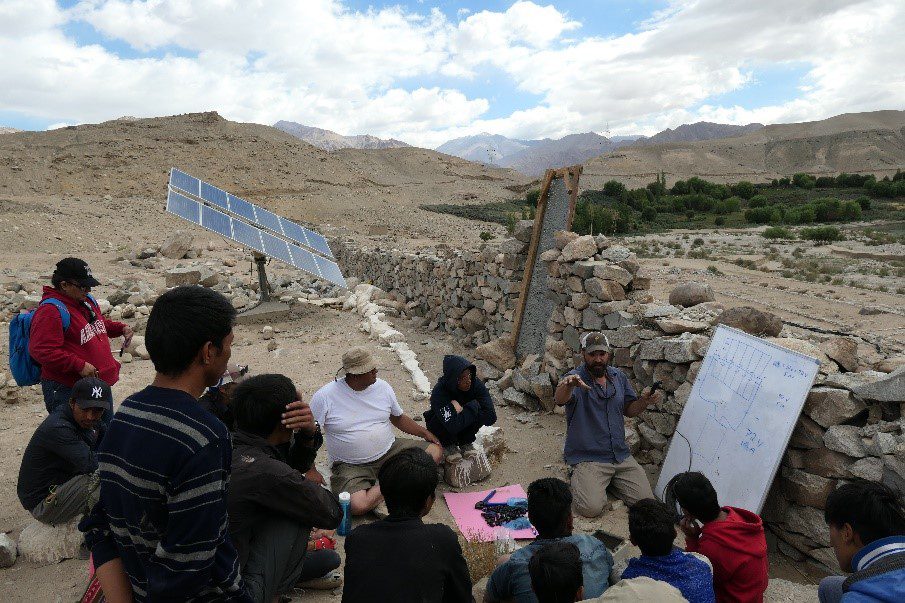
Solar Projects in Ladakh: A Model for Sustainable Energy
Overview of Major Solar Energy Initiatives in Ladakh
Several pioneering solar energy projects have been implemented across Ladakh, making it a leading example of sustainable energy solutions. One of the most notable projects is the Ladakh Renewable Energy Development Agency (LREDA), which has installed hundreds of solar photovoltaic systems in rural villages. These projects have ranged from small solar-powered homes to larger community-based microgrids that power entire villages.
Solar farms are also becoming increasingly common in Ladakh. For instance, the Changtang region has benefitted from a large-scale solar project that provides power to multiple villages, reducing dependency on conventional energy sources.
| Solar Project | Scale | Impact |
|---|---|---|
| Ladakh Solar Photovoltaic | Small to Medium Scale | Powering individual homes, schools |
| Changtang Solar Farm | Large Scale | Powering multiple villages |
| LREDA Solar Microgrids | Community Based | Energy independence for remote areas |
Solar Energy as a Pathway to Energy Independence in Ladakh
As more solar projects come online, Ladakh is steadily moving toward energy independence. By generating their own electricity through solar panels, Ladakh’s villages are reducing their reliance on expensive, imported fossil fuels. This is especially important in a region like Ladakh, where transporting fuel can be prohibitively expensive and environmentally damaging.
Off-grid solar systems have been instrumental in achieving this independence. These systems are designed to operate autonomously, without being connected to the central power grid, making them ideal for Ladakh’s remote settlements.
How Remote Communities Are Leading the Renewable Energy Revolution
Community-Driven Solar Initiatives in Ladakh
One of the key factors behind the success of Ladakh’s solar revolution is the active involvement of local communities. In many villages, the solar initiatives have been driven by grassroots efforts, with local leaders and residents taking an active role in the planning, implementation, and maintenance of solar power systems.
For example, the village of Tangste has become a shining example of how community-driven solar projects can succeed. Villagers, with support from local NGOs and government agencies, helped install solar panels and now manage the maintenance and upkeep of their local grid. The result is a sustainable energy solution that is owned and operated by the community.
The Social and Economic Impact of Solar Villages in Ladakh
The shift to solar energy has had a significant social and economic impact on Ladakh’s rural communities. Solar electrification has created jobs in solar panel installation and maintenance, while reducing household energy costs. With access to consistent electricity, villagers can now operate machinery, store food more effectively, and engage in new economic activities such as handicrafts, tourism, and local businesses.
Additionally, the availability of solar electricity in Ladakh has been a boon for education. Schools that once operated without reliable power can now provide students with access to technology, enabling better learning environments.
The Technology Behind Ladakh’s Solar Villages
Solar Power Systems Used in Ladakh’s Remote Communities
The solar power systems installed in Ladakh’s villages rely on photovoltaic technology, which converts sunlight into electricity. These systems are often designed to be modular, allowing them to be scaled up as needed. Most systems include solar panels, battery storage units, and inverters that convert the energy into a usable form for homes and businesses.
Ladakh’s extreme weather conditions also mean that these solar systems must be durable and capable of withstanding high-altitude environments, where temperatures can drop dramatically in winter.
Challenges in Solar Energy Deployment in High-Altitude Regions
While solar energy offers tremendous promise for Ladakh, deploying these systems in such a harsh environment comes with challenges. High-altitude regions experience severe winters with heavy snowfall, which can sometimes obstruct solar panels and reduce efficiency. Additionally, the installation of solar systems in remote areas involves logistical challenges, as equipment often has to be transported across difficult terrain.
However, these challenges are being overcome with innovative solutions, such as snow-resistant solar panels and efficient maintenance systems that ensure year-round operation.
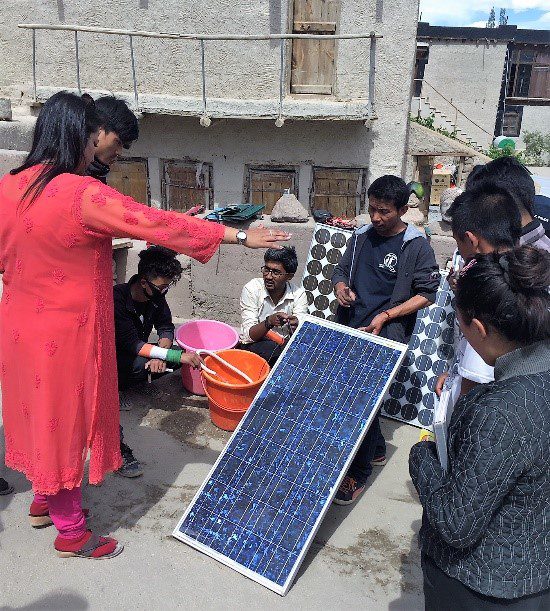
The Future of Renewable Energy in Ladakh
Expanding Solar Energy Projects Across Ladakh and India
Ladakh’s solar revolution is a blueprint for future renewable energy projects across India and beyond. As the region continues to expand its solar infrastructure, it serves as a model for other remote and off-grid areas seeking to embrace clean energy. Solar power, due to its scalability and low maintenance requirements, is particularly well-suited to regions like Ladakh that face challenges in extending conventional power grids.
With continued government support and community involvement, Ladakh’s success with solar energy is likely to inspire similar initiatives in other parts of India and the world.
The Role of Policy and Government Support in Ladakh’s Solar Energy Revolution
Government support has played a crucial role in making Ladakh’s solar energy projects a reality. Initiatives like the Pradhan Mantri Kisan Urja Suraksha evam Utthaan Mahabhiyan (PM-KUSUM) scheme have provided funding for the installation of solar pumps and microgrids, helping to electrify remote areas.
Looking ahead, policy reforms and continued investment in renewable energy infrastructure will be vital for scaling solar projects and ensuring their long-term sustainability.
Conclusion: Ladakh’s Solar Villages as a Blueprint for Global Renewable Energy
Ladakh’s transformation into a region of solar-powered villages offers a compelling example of how renewable energy can improve the lives of people in remote areas while contributing to global sustainability goals. By investing in solar energy, Ladakh has not only secured energy independence for its remote communities but also demonstrated that clean energy is both practical and essential for the future of rural electrification.
As the world continues to grapple with the effects of climate change and energy insecurity, Ladakh’s solar villages serve as a beacon of hope, illustrating that even the most isolated regions can lead the way in the renewable energy revolution.
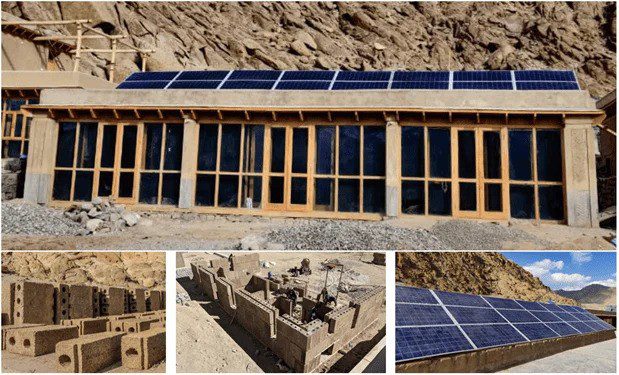
FAQs on Ladakh’s Solar Villages and Renewable Energy
How are solar villages transforming Ladakh’s rural areas?
Ladakh’s solar villages provide reliable, clean electricity to remote regions, improving education, healthcare, and economic opportunities.
What are the key benefits of solar power in remote regions like Ladakh?
Key benefits include energy independence, reduced reliance on fossil fuels, and a sustainable power source that is accessible even in isolated areas.
How does Ladakh’s solar energy project compare to other renewable initiatives in India?
Ladakh’s projects are unique due to the region’s extreme climate and remote geography, but they are part of India’s broader push toward renewable energy and sustainability.
What are the biggest challenges to deploying solar energy in Ladakh?
Challenges include harsh winter conditions, logistical difficulties in transporting equipment, and ensuring systems remain operational year-round.
How can other regions replicate Ladakh’s solar success?
Other regions can replicate Ladakh’s success by focusing on community-driven initiatives, investing in off-grid solutions, and securing government support for renewable energy projects.
What role does the community play in Ladakh’s solar revolution?
Local communities are instrumental in the success of solar projects, helping with installation, maintenance, and management of the systems.

